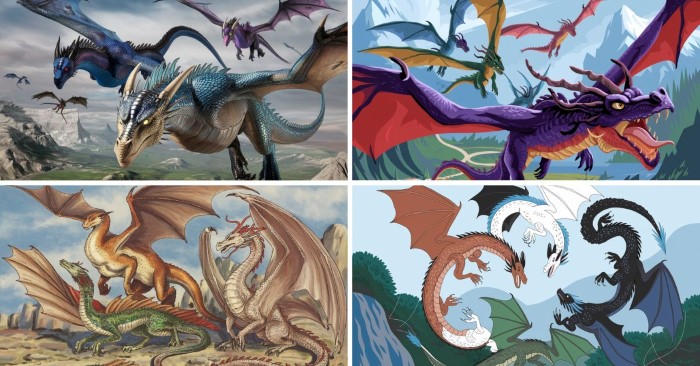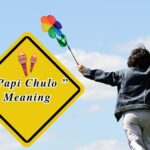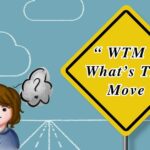We use special words, called collective nouns, to describe groups of dragons. A Collective Noun for Dragons is often “flight” or “thunder.” These terms appear in stories and legends to describe dragons coming together. When referring to a group of dragons, you would say “a flight of dragons.”
But have you ever wondered what we call a group of dragons? These Collective Noun for Dragons terms add flavor and imagination to stories and conversations about these fantastical beasts. Let’s explore the enchanting Collective Noun for Dragons terms used to describe these majestic beings when they gather.
Collective Noun for Dragons
Dragons are legendary creatures found in myths and stories all around the world. Like other animals, groups of dragons can have special names, depending on where they are or what they’re doing.
Below is a table that highlights some of the most common collective nouns for dragons and what they mean. Here is the table of collective nouns for dragons:
| Collective Noun | Description |
| Flight of Dragons | A group of dragons flying together in the sky. |
| Weir of Dragons | Dragons gathered near their lair or a body of water. |
| Thunder of Dragons | The powerful sound of dragons moving or roaring, often heard echoing through mountains. |
| Brood of Dragons | A group of dragons that are related, typically siblings. |
| Weyr of Dragons | A large group of dragons, especially when they live together in a specific habitat or dwelling. |
Detailed Explanation with examples Collective of noun for dragons
A collective noun refers to a word used to describe a group of things or creatures. For dragons, several unique collective nouns tell us about how they gather or behave. Below, you’ll find detailed explanations and examples of these terms used for dragons.
Flight of dragons

When dragons take to the sky together, we call it a “Flight of Dragons”. Imagine them soaring through the clouds, their wings casting shadows over the land below. A “collective noun” is a word used to describe a group of things or beings as a single unit.
For example, “flight” is the collective noun used to refer to a group of dragons when they are flying together. Just like we say “a flock of birds” or “a swarm of bees“, we say “a flight of dragons” to describe multiple dragons soaring through the sky.
For Examples:
- The villagers watched in awe as a flight of dragons passed overhead.
- A flight of dragons emerged from the clouds, casting shadows over the land.
- Legends spoke of a flight of dragons that protected the ancient city.
- In the fantasy novel, a flight of dragons saved the kingdom from invaders.
Weyr of Dragons
A “Weyr of Dragons” is a large community of dragons living together, often in harmony within their home. A “weyr” is a collective noun used to describe a group of dragons in the context of the “Dragon Riders of Pern” series by Anne McCaffrey. A collective noun is a word that denotes a group of individuals or things. In this case, “weyr” refers to the entire community of dragons and their riders living together.
What are the Collective Nouns For Bananas
For Examples:
- Each Weyr had its unique color and character, reflecting the personalities of its dragons.
- During the festival, the whole Weyr came together to celebrate with music and feasting.
- The Weyr was bustling with activity as dragons prepared for the upcoming flight.
- Stories of brave dragons and their riders were passed down through generations in the Weyr.
Thunder of Dragons
The term “Thunder of Dragons” captures the immense power and noise when dragons come together, their roars as loud as a storm.
“Thunder” this collective noun evokes the idea of dragons as a formidable, majestic and almost mythical group. Just as thunder is a loud and impressive sound in nature, the “thunder” of dragons implies their overwhelming presence and strength.
For Examples:
- A Thunder of Dragons flew across the sky, their wings creating a mighty roar.
- In the ancient legend, a Thunder of Dragons guarded the hidden treasure.
- The villagers spoke in hushed tones about the “Thunder of Dragons” that lived in the mountains.
- A Thunder of Dragons appeared during the storm, adding to the tempest’s fury.
Brood of Dragons
A “Brood of Dragons” refers to a family group, often siblings, who share a strong bond. In English, a collective noun is a word that describes a group of individuals or things as a single entity.
The term “brood” for dragons means a family or group that comes from the same origin, similar to a brood of chicks or puppies.
For Examples:
- The dragon’s brood was fierce and protective.
- In the story, the brood of dragons guarded the ancient treasure.
- A brood of dragons can change the course of the battle.
- The forest was home to a brood of dragons, hidden from human eyes.
Weir of Dragons
A “Weir of Dragons” refers to dragons gathering near sacred places, like lakes or caves, often surrounded by mystery. The term “Weir” when used as a collective noun for dragons is a unique and imaginative choice.
It evokes the idea of a powerful, perhaps mystical group of dragons working together or existing close. While not commonly used in everyday language, it paints a vivid picture of a fantastical scenario.
For Examples:
- In the ancient legend, the weir of dragons guarded the hidden treasure.
- The weir of dragons emerged from the mist, their scales shimmering in the moonlight.
- During the battle, the weir of dragons unleashed a coordinated attack on their enemies.
- A storyteller described a weir of dragons as the protectors of the enchanted forest.
Conclusion
Dragons are fascinating creatures found in many cultures’ myths and stories. They often represent powerful forces, whether as protectors or threats.
While they may not exist in reality, their enduring presence in literature and folklore highlights our fascination with the idea of powerful, mystical beings.
Dragons Collective Noun Quiz 🐉🐉🐉
Dragons have captivated our imaginations for centuries. But how do we describe groups of these magnificent mythical beasts? Let’s test your knowledge of dragon collective nouns!
Quiz Questions
What is the most commonly used collective noun for dragons?
- a) Flight
- b) Wing
- c) Flame
- d) Hoard
Which term, often used for lizards, can also describe group of dragons?
- a) Lounge
- b) Leap
- c) Lumber
- d) Legion
What fiery term might be used to describe aggressive or battle-ready dragons?
- a) Blaze
- b) Inferno
- c) Scorch
- d) Ember
Which royal-sounding term could describe majestic group of dragons?
- a) Court
- b) Council
- c) Coronation
- d) Crown
What term, borrowed from another mythical creature, might describe wise, ancient dragons?
- a) Parliament
- b) Gathering
- c) Assembly
- d) Convocation
Correct Answers With Short Explanation
- a) Flight: “Flight” is the most commonly accepted collective noun for dragons, echoing their ability to fly.
- a) Lounge: “Lounge” is used for lizards and can be creatively applied to dragons, suggesting a group at rest.
- b) Inferno: “Inferno” evokes the fiery nature of dragons and could describe battle-ready group.
- a) Court: “Court” suggests nobility and majesty, fitting for impressive group of dragons.
- d) Convocation: “Convocation” is used for eagles and phoenixes, but could apply to wise, ancient dragons, suggesting formal gathering.
How did you score? These terms blend traditional animal collective nouns with the mythical nature of dragons. Remember, language can be creative, especially when describing fictional creatures!







